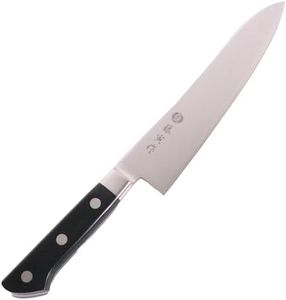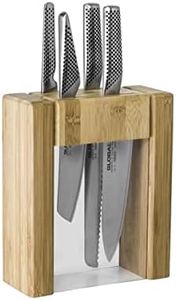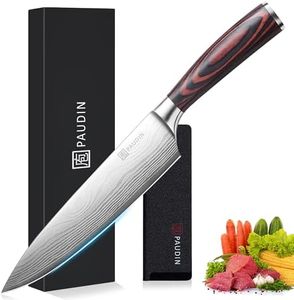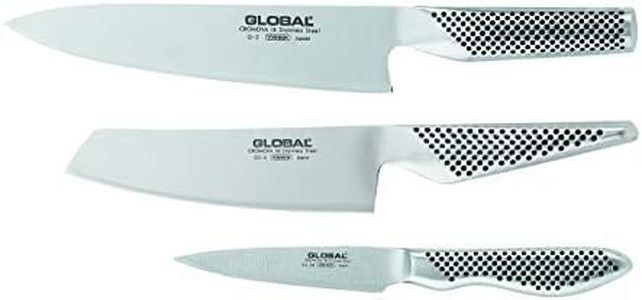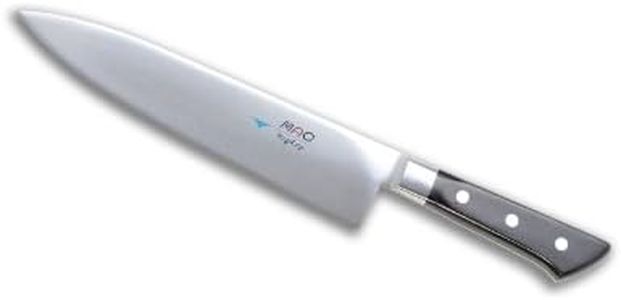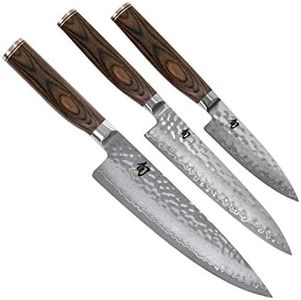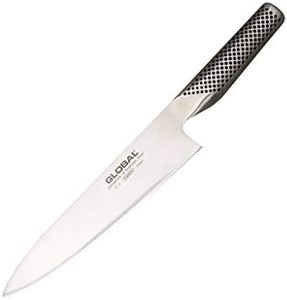We Use CookiesWe use cookies to enhance the security, performance,
functionality and for analytical and promotional activities. By continuing to browse this site you
are agreeing to our privacy policy
10 Best Knives For Chefs
From leading brands and best sellers available on the web.Buying Guide for the Best Knives For Chefs
Choosing the right chef's knife can transform your cooking experience, making food prep easier, faster, and more enjoyable. When picking a knife, it's important to consider not just how sharp it is out of the box, but factors like comfort, balance, size, and the materials used. The best chef's knife for you fits well in your hand, supports your cooking style, and feels like a natural extension of your arm. Think about what you cook most often and how you like to work in the kitchen—these factors should guide your decision.Blade MaterialBlade material affects how sharp your knife can get, how long it holds its edge, and how easy it is to care for. The most common options are stainless steel, carbon steel, and different alloys. Stainless steel knives resist rust and are easier to maintain, which suits most home cooks. Carbon steel is easier to sharpen and can become extremely sharp, but it needs a bit more attention to prevent staining or rust. High-tech alloys sometimes offer a balance of both. Think about how much maintenance you want to do—if you want something easy, go with stainless; if you love sharpness and don’t mind wiping your knife dry, try carbon steel.
Blade LengthChef’s knives typically range from about 6 to 10 inches long. Shorter blades (around 6-7 inches) are easier to control and maneuver, making them great for smaller kitchens or precise work. The classic 8-inch blade is the most versatile and suits most people, while longer blades (9-10 inches) can tackle larger volumes of food and bigger cuts, but take more practice to control. Consider what you chop or slice most, and what feels comfortable in your hand.
Blade ShapeMost chef’s knives have either a European-style curved blade or a straighter Japanese-style edge. Curved blades are ideal for a rocking chopping motion, which works well for herbs or vegetables, while straight blades excel at push-cutting and precise slices. Your preferred cutting technique should guide your choice here: if you rock chop, pick a curved blade; for up-and-down slicing, try straighter edges.
Handle Comfort and MaterialThe handle should feel secure and comfortable in your grip, without pinching or slipping. Handles come in various materials like wood, plastic, and composite materials. Wood feels traditional and warm, but needs more care to keep it dry. Plastic and composite handles are more resistant to water and tend to be easier to maintain. People with larger or smaller hands might prefer different shapes, so ideally, test how the knife feels before deciding.
Weight and BalanceA chef’s knife should feel balanced between the blade and the handle so you have good control and don’t tire easily. Some prefer lightweight knives for speed and less fatigue, while others like hefty knives that help cut through tough foods. Pick what feels most natural and comfortable after holding and moving the knife around a bit—you want it to feel like an extension of your hand, not a struggle.
Edge TypeMost chef’s knives have a smooth, straight edge, perfect for clean cuts. Some feature a granton edge—those little dimples along the blade—to help food release easily. If you work with sticky foods or soft vegetables, a granton edge can be useful, while a plain straight edge is great for most general tasks. Choose based on the foods you prep most.
